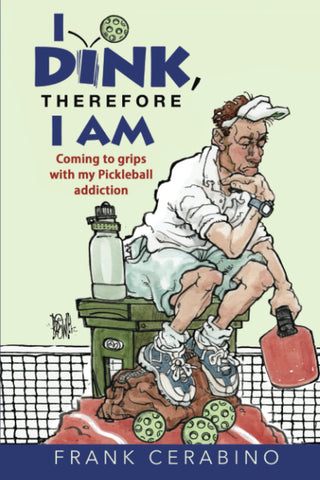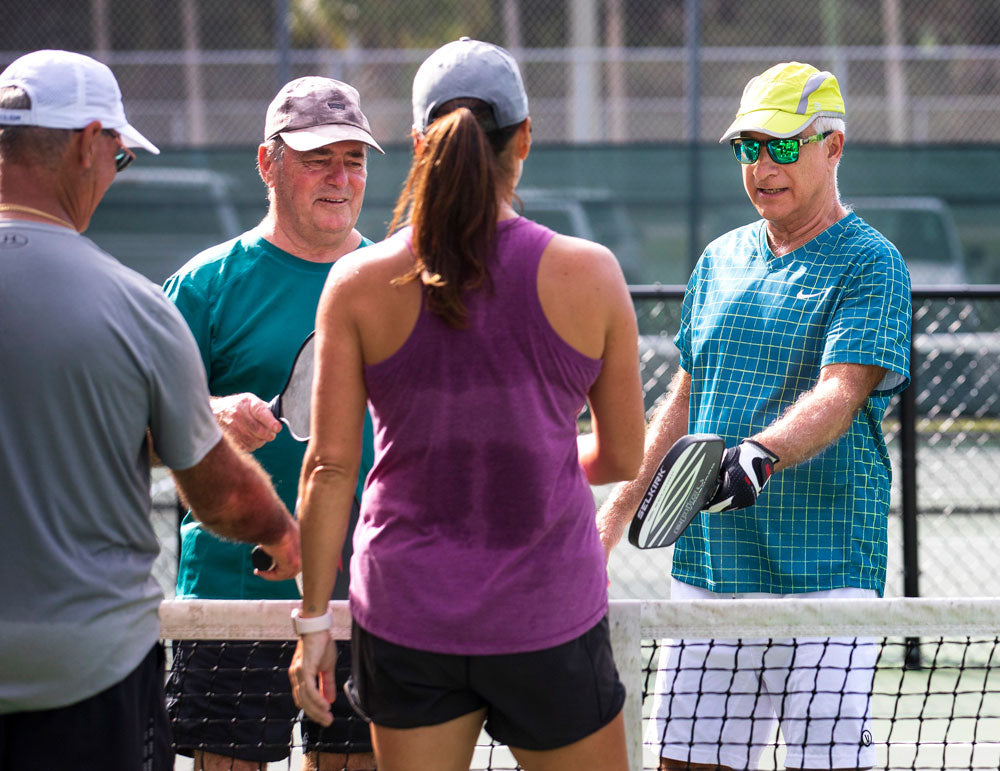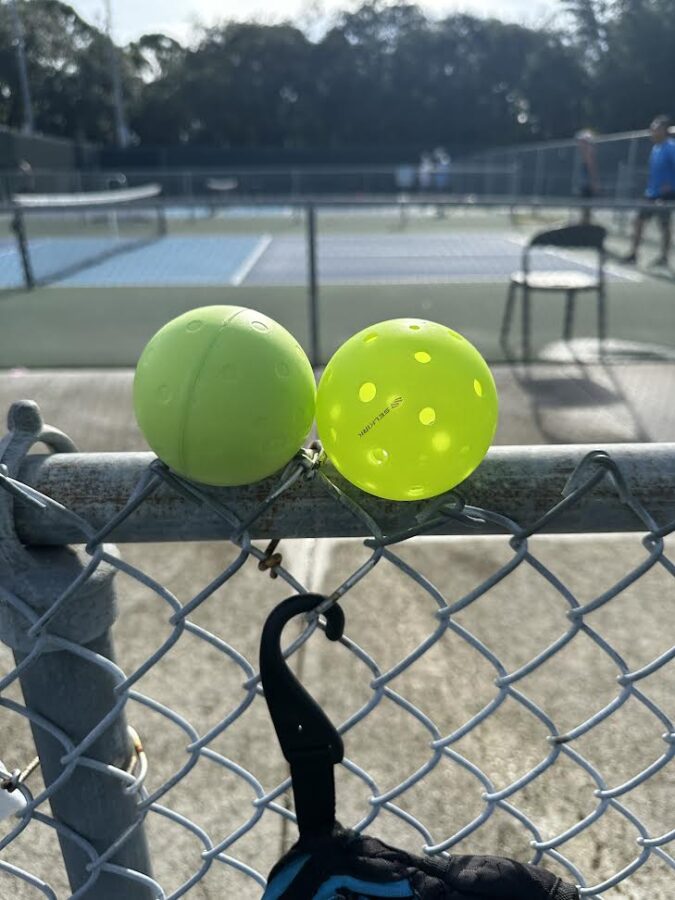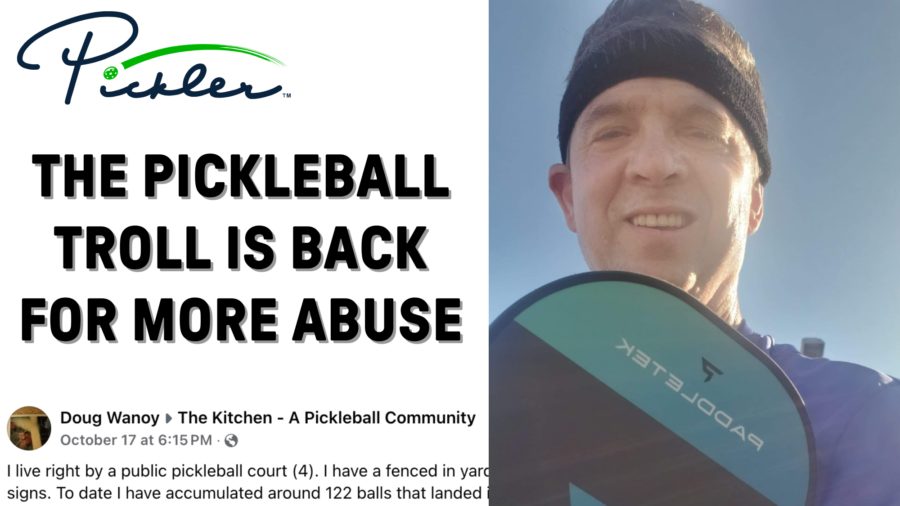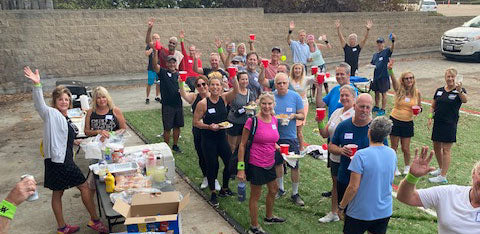So, if you could change one rule in pickleball, what would it be?
Eric Daw, a Canadian pickleballer and fitness guru for people over 50 years old, asked this question recently.
And he got hundreds of responses. Here are some of the more interesting suggestions, with my own two cents thrown in.
Get rid of the momentum rule for kitchen faults
This is the rule that makes it a foot fault to step into the non-volley zone as a result of your body’s momentum after you volley a ball while legally standing outside the line.
This rule prevents players from violating that seven-foot cushion between the net and the kitchen line by racing toward the net to volley a ball with no regard to where their feet land after the shot.
As you might imagine, without the momentum rule, taller players would essentially be able to lean forward and volley balls at or near the net.
Bad idea. Next.
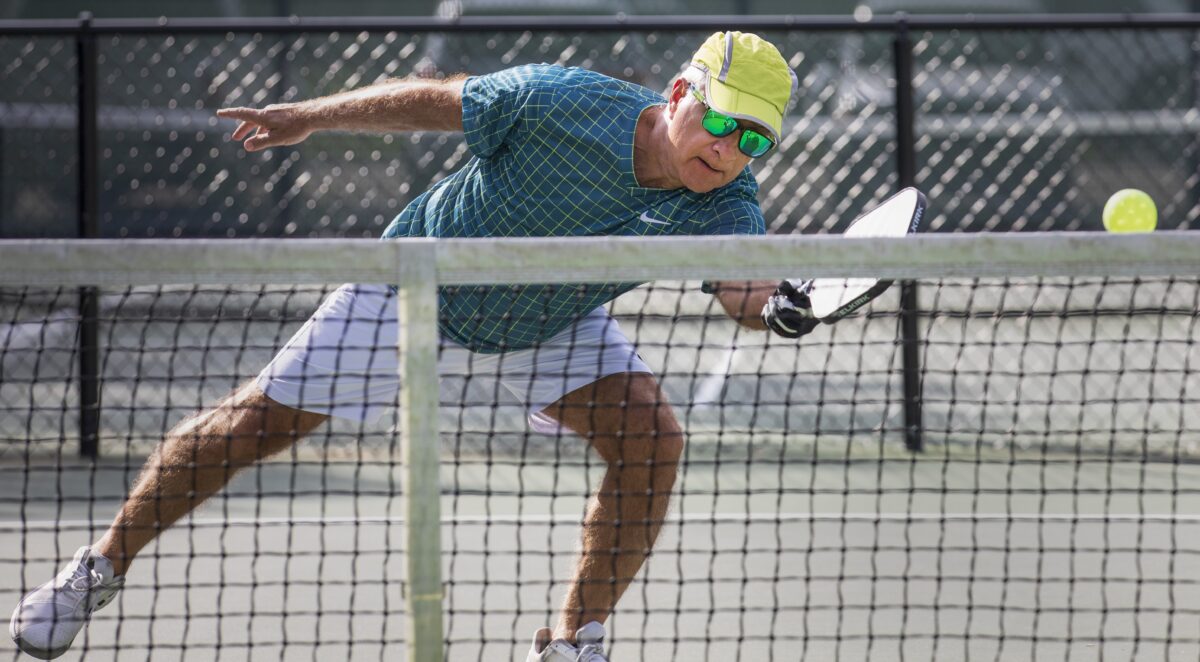
Make drop serves the only legal serve
This rule change to eliminate the volley serve would surely end a common area of disagreements on the court. I think we’ve all been in a game with an opposing player who has a borderline illegal volley serve.
Legal volley serves must be made with the server’s paddle striking the ball while making an upward arc. This underhanded swing must be made in a way that the highest point of the paddle is below the wrist when the ball is struck. And the contact with the ball must be below the waist.
Players sometimes fudge on these requirements by developing a sidearm serve. Once that illegal serve starts resulting in service aces, the trouble starts.
It’s also very hard to judge the legality of a volley serve. Frequently, serves appear to be illegal, but when video-taped and analyzed in slow motion, they look to be borderline legal.
So, the suggestion here is to eliminate that volley serve and require players to use the only other remaining legal serve, the drop serve.
The drop serve has the advantage of simplicity. As long as you drop the ball (at any height) without spin from an open palm, it’s legal. All those other requirements of a volley serve disappear.
Eliminating the volley serve would be a hardship, at first, to many players who have spent a good bit of time developing a crafty and legal volley serve.
But it probably wouldn’t change the game very much.
Pickleball, unlike tennis, already de-emphasizes the serve, and rallies tend to be decided by third, fourth and fifth shots more than serves.
So, this theoretical rule change would have an upside of keeping the peace on the courts while not altering the game in a major way.
The return of serve must clear the non-volley zone line
This rule change would end those dink returns that usually happen by accident rather than design.
In returning a good and hard-hit serve, the returning player, while trying to hit a solid return, hits the ball on the edge of his or her paddle, or makes a weak swing.
Instead of a return that sails deep on the server’s side – the best kind of return – the ball barely clears the net, and falls like a drop shot into the non-volley zone of the serving team.
The server’s good serve backfires. The weak return is an accidental winner if the serving players can’t race to the net and hit the ball before it bounces twice.
Changing the rule to make the returns clear the kitchen line to be in play would help less mobile players, and perhaps, eliminate a few injuries in older players who expose themselves to pulls, strains and muscle tears by the sudden lurch from the baseline to the net.
It also would eliminate the undeserved good fortune of the player who returned the serve – turning his or her poor shot into a winner.
But are these reasons enough to change the rule?
Nah. Players need to look to themselves to realize their own physical limits on the court. And if sometimes a poor return turns into a lucky winner, so be it. That’s part of the game, like a broken-bat single in baseball.
If you hit an opponent with the ball, you lose the rally
I know why some people have proposed this.
The terms “body bagging” and “meat volley” have become pickleball slang for the practice of ending rallies by hitting a hard shot at an opponent’s torso.
If a player is too slow or unprepared to get his or her paddle up to parry the body ball, the rally goes to the attacker.
Some otherwise friendly recreational-level games have come to an abrupt end after a player feels that he or she is being targeted with unnecessarily hard and frequent body shots.
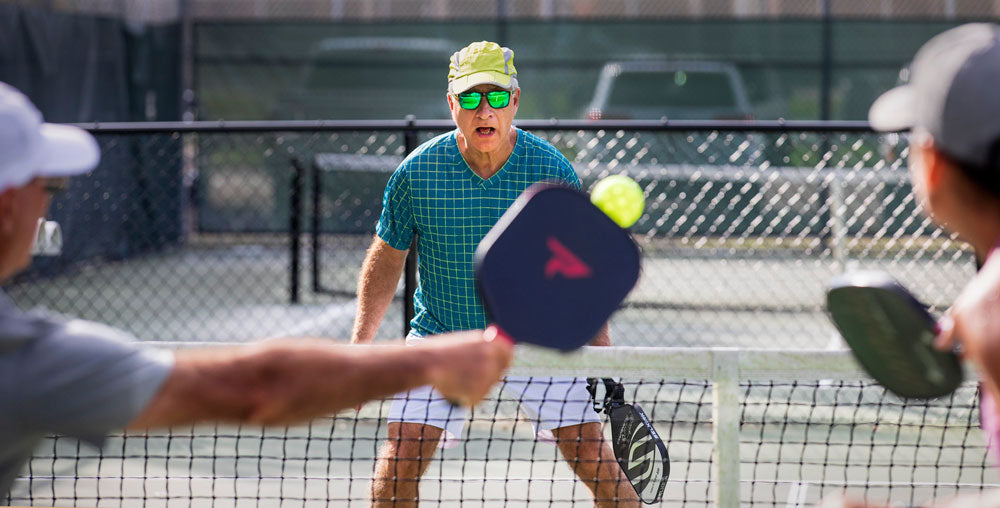
Players who touch the ball with anything other than their paddles or their wrists holding their paddles lose the rally. So, it’s tempting, especially when all four players are gathered 14-feet away from each other at the non-volley zone line, to surprise a player by hitting a hard shot at his or her body.
But is that good sportsmanship?
Some will point out that this is perfectly legal and no big deal with a relatively harmless plastic ball. Others will say this is bad behavior, especially when the ball is anywhere near the person’s head or hit with extra oomph.
The problem with punishing people who try to “body bag” their opponents is that it creates unwanted consequences.
If a player loses the rally due to hitting an opponent with the ball, players will start intentionally stepping into volleys, allowing these balls to hit their bodies in order to win points.
This will end up creating more acrimony than had previously existed.
It’s better to leave things the way they are.
Get rid of the ATP
One of the more exciting shots in pickleball is the around-the-post (ATP) shot. A player lunges far to the side of the court, and makes a low return that travels past the side of the net, not over it.
If the ball lands in bounds on the court it’s a winner.
Some players have pointed out that other net sports, such as volleyball and tennis, don’t sanction shots that go past the side of the net, not over it.
But is being different in this case all that bad? The ATP is an exciting shot to make and new players often shout for joy when they make one for the first time.
Why take it away? It’s better to have it remain a quirky little Easter egg in the pickleball rulebook.
Ban the word “Out!” as teammate communication
It sometimes creates confusion when a player shouts “Out!” to his teammate before a ball hits the court on their side of the net.
The “out” in this case is an admonition to the teammate to avoid hitting the ball until after it has bounced on the court. Players who shout “Out!” are giving advice to their teammates that they think the ball will bounce out of bounds.
The problem is that players on the opposing side think that the word “Out!” is actually a line call being made before the ball hits the court.
And they stop playing the point as a result of that.
For that reason, it is better to reserve the word “Out!” for a line call rather than partner communication, when you could convey the same warnings by shouting, “Let it bounce!” or “No!” or “Leave it!”
But does that mean that shouting “Out!” as partner advice should be treated like shouting “Fire!” in a crowded theater?
And that players who shout it prematurely should be penalized by losing the rally? Seems extreme.
It’s better to learn to ignore “Out!” calls from across the net and be prepared to keep playing until the rally is over.

The “Celebration Dance Rule”
OK, here’s one you probably haven’t heard yet. One reader proposed a mandatory dance rule.
“After every point scored, the winning player or team must perform a celebratory dance for at least 5 seconds before continuing play. Failure to dance enthusiastically enough, as judged by the opposing team, revokes the point.”
I would only agree to this rule if somehow it also involved alcohol and a live band at the courts.
Leave the rules alone
I find that the result of one of these deep thinks about improving the game of pickleball through rule changes is that it makes you realize anew just how solid and sensible the game’s existing rules are.
Yes, it’s a relatively new game, and the millions of new players who discover it every year bring some fresh perspectives to it. And that ends up with a lot of wondering about scrapping or changing rules.
But it just could be that the game works fine as it is.
Pickleball might just be in a state best described by the saying, “If it ain’t broke, don’t fix it.”
MURMURS FROM THE LOSERS’ BRACKET
Read past editions of Murmurs from the Losers’ Bracket, including:
- In a Pickle with Some Off the Cuff Remedies for Leg Cramps
- Partnering with a Giant: Hitting the Wall in Pickleball
- Ten Things Not to Say on a Pickleball Court
- Oh, the Horror! Playing with a Pickleball Partner who won’t Move Up
- Not a Softie When it Comes to Pickleball with a Foam Ball
- Do Pickleball Prayers Get Answered?
- Ten Tips for Being “Nice” at Pickleball
- Attention Pickleballers: Be On The Lookout For “Ball Blowers”
- The Etiquette Crisis with “Open Play”
- Lob into the Sun? Maybe, Maybe Not
- Mastering the Diplomacy of Round-Robin Scheduling
- Confessions of a Paddle Addict
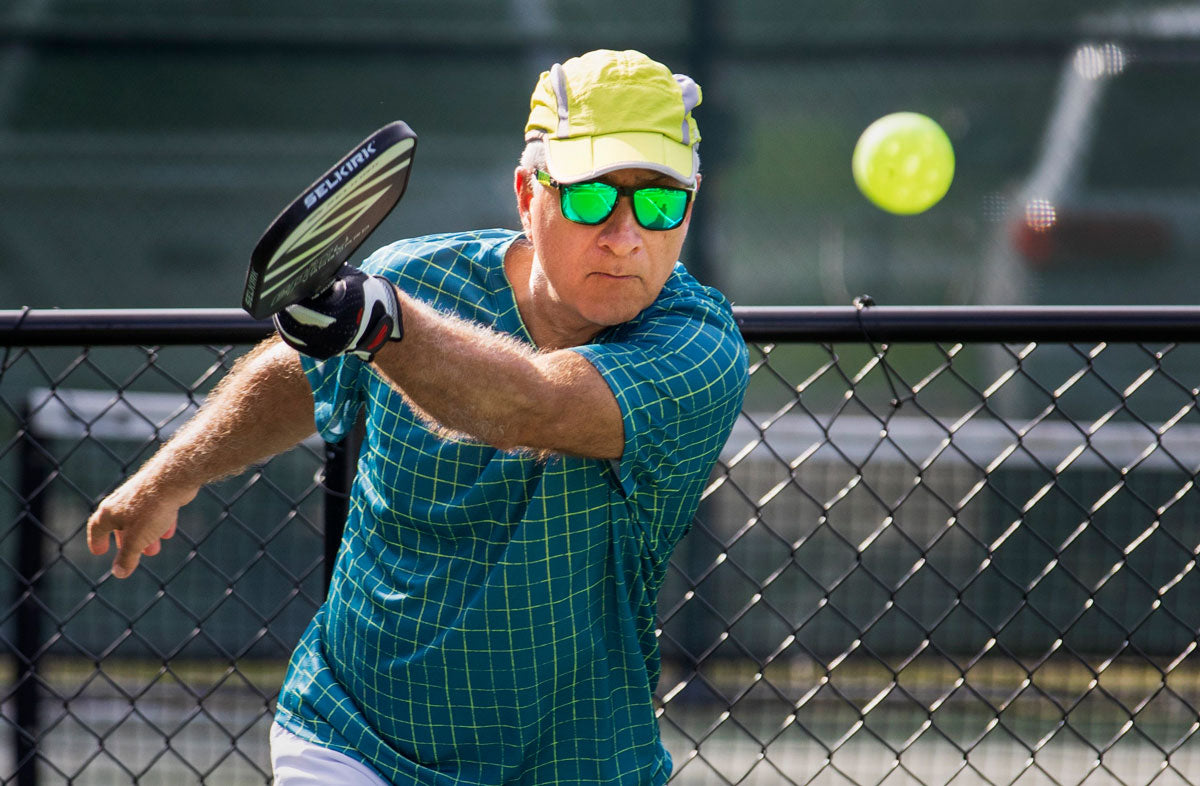
Frank Cerabino is a long-time columnist for the Palm Beach Post in Florida, a pickleball addict like the rest of us, and a newly published author. Check out Frank’s newly released book, I Dink, Therefore I Am: Coming to Grips with My Pickleball Addiction (available on Amazon and a great read (or gift!) for any pickleball player), for pickleball tips and laughs!
